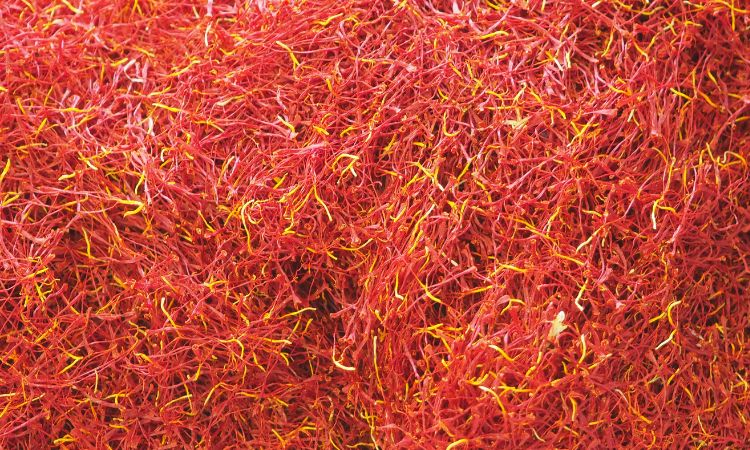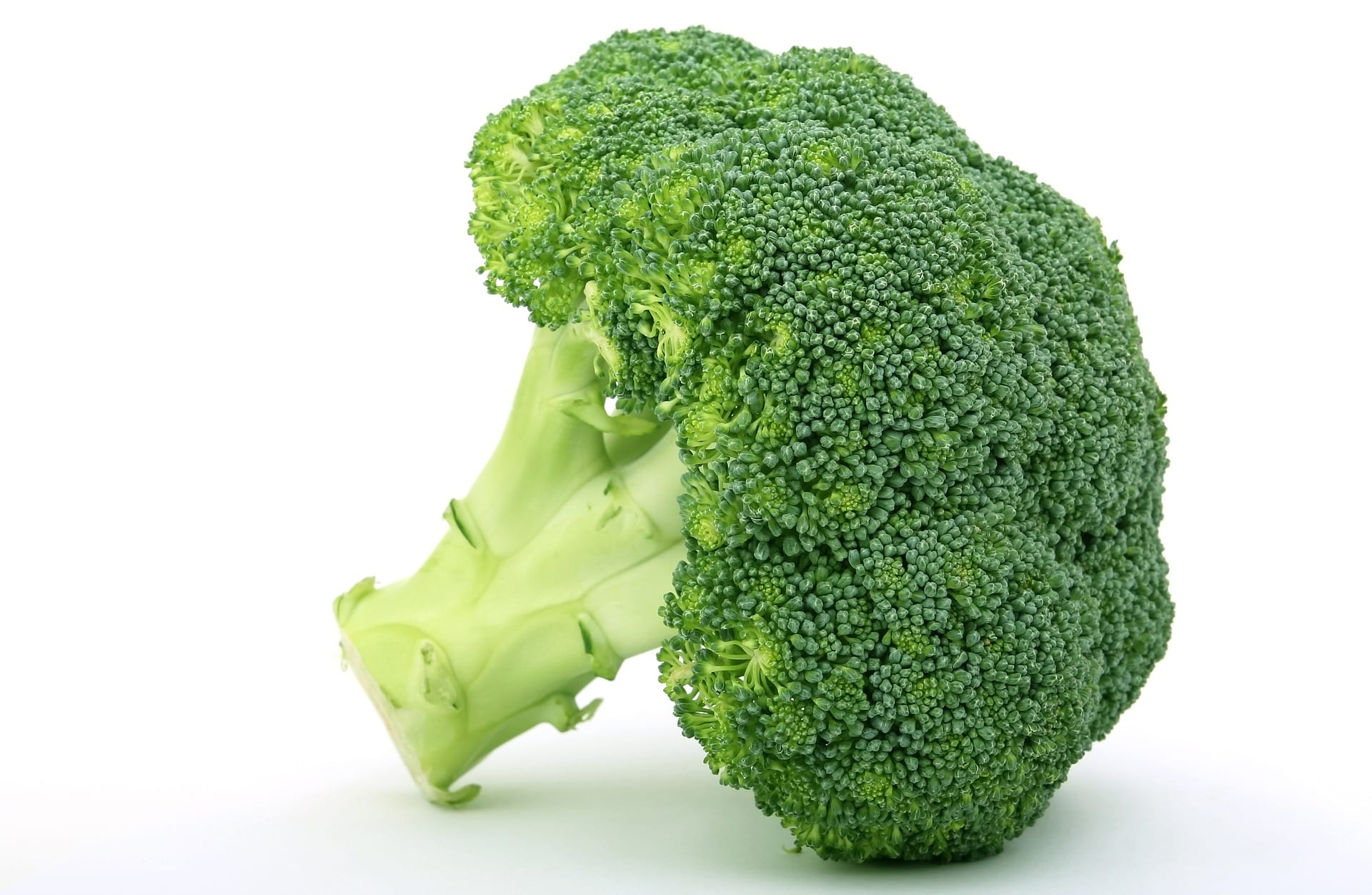Write: Monica Uriel. Journalist
El saffron, known as the "Red Gold" Because it is the most expensive spice, it is at risk of disappearance in Spain. All due to climate change and the lack of manpower. Is the outlook really that serious?
In this first half of November, when harvested, the lands of La Mancha had to be covered by a purple cloak of the crocus flower. However, this cloak is no longer seen every year.
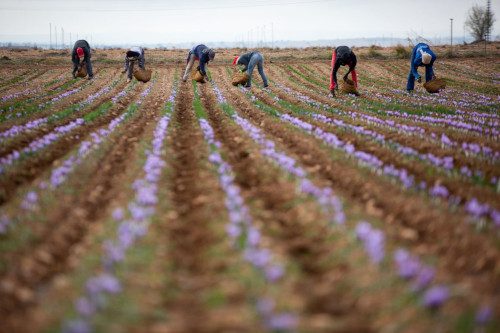
These months of September y October it was too hot. That is why the cultivation aborts part of the flowers and has less production. He tells us Jose Manuel Herreros, Spanish Saffron Export Company (CEAE), in a farmland in Pétrola (Albacete). This province is, together with Toledo, Cuenca, Guadalajara and Ciudad Real, as well as Teruel, one of the traditional saffron production areas in Spain. Saffron La Mancha has a PDO. Currently, due to climate change, it is being planted in Lleida (Catalonia), in search of cold winters and very hot summers. Saffron adapts to almost any type of soil.
Climate change and generational change
For eight years, and although the surface is expanding, "production has dropped a lot because nor are they cold enough”, Says Herreros. “Here, in these 30 hectares, we used to take out 60 kilos of saffron, and this year we hope to get 18. This is because of climate change ”, he says.
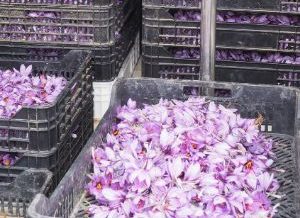
"In the años 70 y 80 Spain was the world leader in production. Now it may disappear and that the saffron remains in a testimonial way ”, he warns. All this puts the cultivation of the saffron. Climate change is compounded by the lack of labor in Spain, unlike in Iran. This country is the world leader in saffron production, as it has many farm workers.
The Arabs brought this crop to Spain, which three decades ago produced 20.000 kilos of saffron per year and now produces 500 kilos per year as much. Behind the exodus from the rural world to the city, the lands were left without people to collect the crops. This was reintroduced in 2007 in Albacete, where "we try to sustain and increase it," says Herreros. "It is not easy to find workers. They are all foreigners ”, from Senegal and Romania. Like Paul, a Romanian, who picks 10 kilos of flowers a day and is paid 8 euros per kilo. Up to six stems emerge from each "onion" or bulb, and from each stem, three or four flowers.
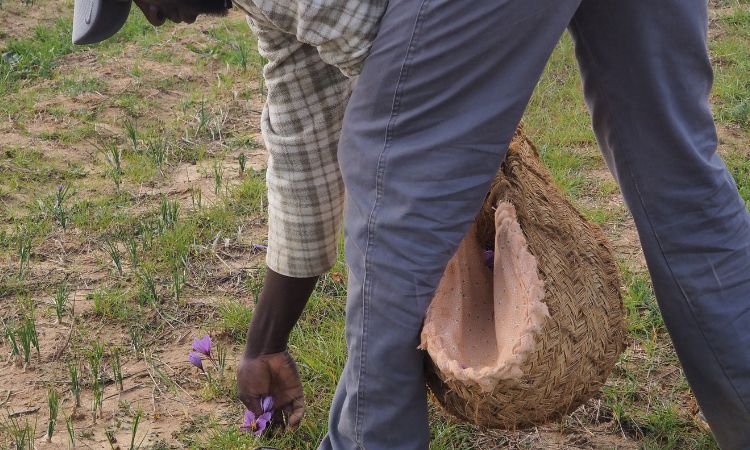
An ingredient not only for paellas
La harvest, for 15 days, between the second half of October and the first of November. It is done early in the morning, because the flower has to be closed. As in other crops, a single pass is made through the same site for harvesting, with the saffron it is repeated every day in the same field. In addition, the harvest, all manual, is laborious: “It has to be done by people who know. Scuttle (separating the red thread with three stigmas from the saffron) is very complicated ”, points out Herreros.
In the shops the kilo of saffron, the most expensive spice in the world, is sold at $12.000. "In reality," Herreros defends, "it is a very cheap product, because very little is spent." Mainly in paella - two strands per person are enough - in Spain, but it can also be added to Manchego gazpacho, fish stews, stews and soups. Saffron has properties Antioxidants y anticancer taking 100 milligrams a day.
The peeling process
Immediately, the collected flowers undergo peeling, which consists of cut the stem y remove stigmata, work that the mondadoras do. “For many village women this is a distraction. We like to get together and have coffee. This relaxes a lot, it's like a nucleoside. There are very few young people who do this, ”says Sabina Rodríguez, 64, while doing the peeling.
Sabina says that she doesn't add it to paellas because “my husband doesn't like it. As they say, at the blacksmith's house, a wooden knife ”.
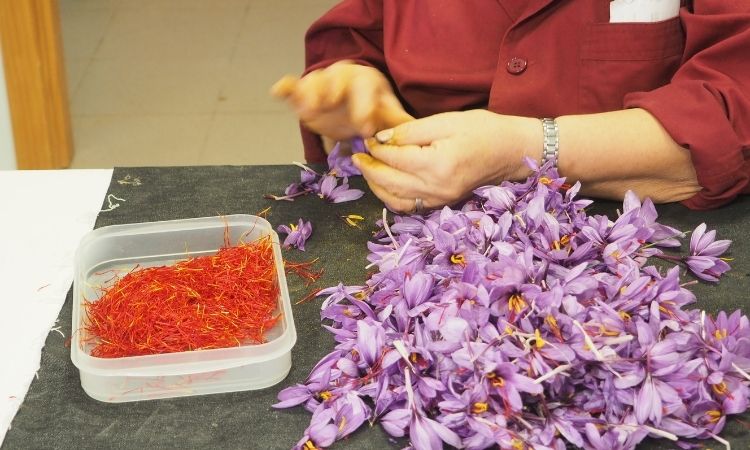
Of the 100 dry grams that it takes out, when dehydrating them, they remain at 20. Thus, to obtain a kilo of roasted saffron, 100 kilograms of flower are needed.
The secret is in the roast
The roasting is done with a ceazo - silk cloth with wood, increasingly difficult to find. The people who make them are dying- In this great rush the saffron is finished dehydrating. The time it takes to roast, a crucial stage in making saffron, is a secret.
📢📢 The #SafrondeLaMancha With Denomination of Origin, it is only marketed in strands and in containers with a maximum content of 100 grams. The Regulatory Council conformity mark is a guarantee of 𝑶𝑹𝑰𝑮𝑬𝑵 𝒚 𝑪𝑨𝑳𝑰𝑫𝑨𝑫 💯💯💯 pic.twitter.com/y5eMI2vkhJ
- PDO Saffron from La Mancha (@DOPAzafran) June 1, 2021
From here is exported to different countries of the world. Among which stands out Sweden, which uses saffron for its buns lussekatter that they make for the day of Santa Lucía. France, Germany, Switzerland, Italy, Japan, the United States and Mexico also buy saffron.
In total there are nine companies dedicated exclusively to saffron throughout Spain, three of them in Albacete. In addition to the secret of roasting, saffron has another. From here you buy saffron from Iran and is ground with a machine that "only two people know" of the 15 who work at the facilities. This was made by an uncle of Javier Guerrero, manager of CEAE. Saffron comes in four types: strand, coupe, crushed, and ground.


